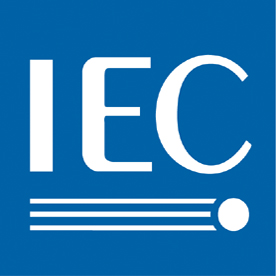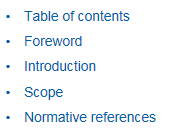IEC 62364:2013 Withdrawn
Hydraulic machines - Guide for dealing with hydro-abrasive erosion in Kaplan, Francis and Pelton turbines
Abstract
IEC 62364:2013 serves to present data on particle abrasion rates on several combinations of water quality, operating conditions, component materials, and component properties collected from a variety of hydro sites; develop guidelines for the methods of minimizing particle abrasion by modifications to hydraulic design for clean water. These guidelines do not include:
- details such as hydraulic profile shapes which should be determined by the hydraulic design experts for a given site;
- develop guidelines based on "experience data" concerning the relative resistance of materials faced with particle abrasion problems;
- develop guidelines concerning the maintainability of abrasion resistant materials and hard facing coatings;
- develop guidelines on a recommended approach, which owners could and should take to ensure that specifications communicate the need for particular attention to this aspect of hydraulic design at their sites without establishing criteria which cannot be satisfied because the means are beyond the control of the manufacturers
- and develop guidelines concerning operation mode of the hydro turbines in water with particle materials to increase the operation life. It is assumed that the water is not chemically aggressive. Since chemical aggressiveness is dependent upon so many possible chemical compositions, and the materials of the machine, it is beyond the scope of this Guide to address these issues. It is assumed that cavitation is not present in the turbine. Cavitation and abrasion may reinforce each other so that the resulting erosion is larger than the sum of cavitation erosion plus abrasion erosion. The quantitative relationship of the resulting abrasion is not known and it is beyond the scope of this guide to assess it, except to recommend that special efforts be made in the turbine design phase to minimize cavitation. Large solids (e.g. stones, wood, ice, metal objects, etc.) traveling with the water may impact turbine components and produce damage. This damage may in turn increase the flow turbulence thereby accelerating wear by both cavitation and abrasion. Abrasion resistant coatings can also be damaged locally by impact of large solids. It is beyond the scope of this Guide to address these issues. Key words: hydraulic, turbines, hydro-abrasive erosion
- details such as hydraulic profile shapes which should be determined by the hydraulic design experts for a given site;
- develop guidelines based on "experience data" concerning the relative resistance of materials faced with particle abrasion problems;
- develop guidelines concerning the maintainability of abrasion resistant materials and hard facing coatings;
- develop guidelines on a recommended approach, which owners could and should take to ensure that specifications communicate the need for particular attention to this aspect of hydraulic design at their sites without establishing criteria which cannot be satisfied because the means are beyond the control of the manufacturers
- and develop guidelines concerning operation mode of the hydro turbines in water with particle materials to increase the operation life. It is assumed that the water is not chemically aggressive. Since chemical aggressiveness is dependent upon so many possible chemical compositions, and the materials of the machine, it is beyond the scope of this Guide to address these issues. It is assumed that cavitation is not present in the turbine. Cavitation and abrasion may reinforce each other so that the resulting erosion is larger than the sum of cavitation erosion plus abrasion erosion. The quantitative relationship of the resulting abrasion is not known and it is beyond the scope of this guide to assess it, except to recommend that special efforts be made in the turbine design phase to minimize cavitation. Large solids (e.g. stones, wood, ice, metal objects, etc.) traveling with the water may impact turbine components and produce damage. This damage may in turn increase the flow turbulence thereby accelerating wear by both cavitation and abrasion. Abrasion resistant coatings can also be damaged locally by impact of large solids. It is beyond the scope of this Guide to address these issues. Key words: hydraulic, turbines, hydro-abrasive erosion
Additional information
| Publication type | International Standard |
|---|---|
| Publication date | 2013-06-27 |
| Withdrawal date | 2019-01-14 |
| Edition | 1.0 |
| Available language(s) | English/French |
| TC/SC | TC 4 - Hydraulic turbinesrss |
| ICS | 23.100.10 - Pumps and motors 27.140 - Hydraulic energy engineering |
| Stability date | 2019 |
| Pages | 151 |
| File size | 3946 KB |
The following test report forms are related:
More information
Share this page
Share your publications
Learn how to share your publications with your colleagues, using networking options.
Payment information
Our prices are in Swiss francs (CHF). We accept all major credit cards (American Express, Mastercard and Visa, JCB and CUP), PayPal and bank transfers as form of payment.
Keep in touch
Keep up to date with new publication releases and announcements with our free IEC Just Published email newsletter.
Contact customer services
Please send your enquiry by email or call us on +41 22 919 02 11 between 09:00 – 16:00 CET Monday to Friday.

